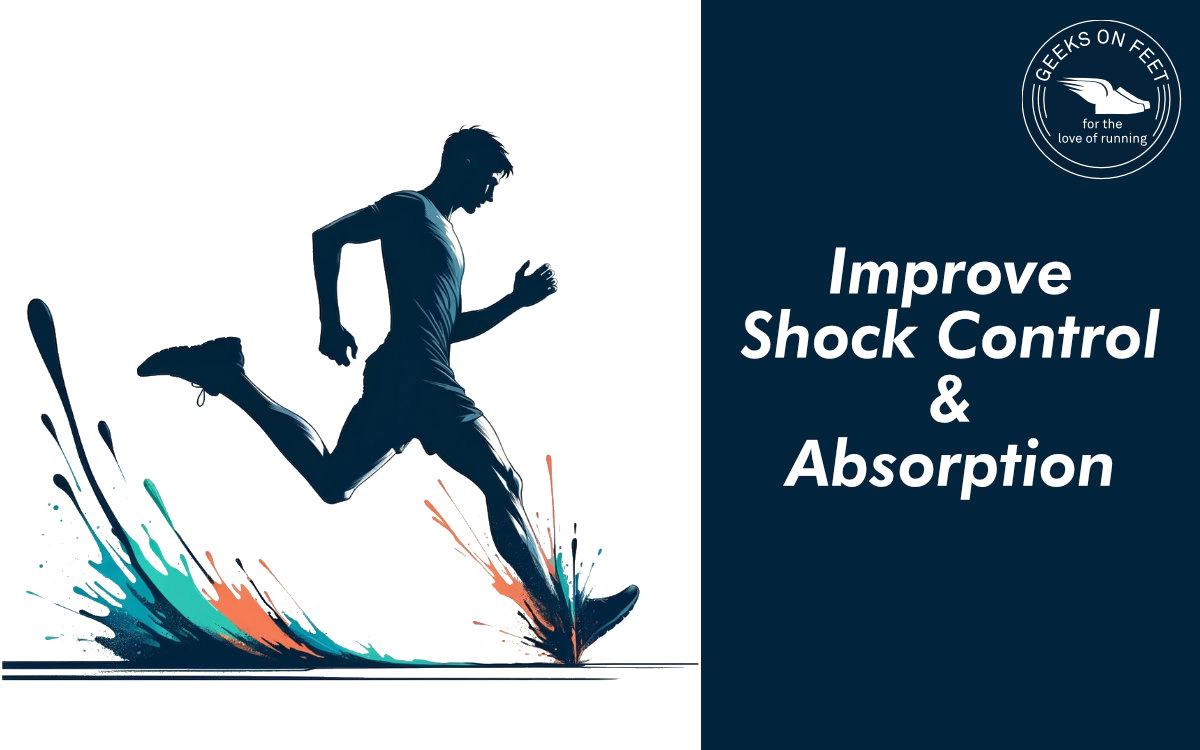
We all recognize the ‘thud, thud’ as our feet make contact with the ground while running. Each footstrike sends a shockwave up our bodies. Though this impact is a natural aspect of running, excessive shock and poor shock management can lead to injuries.
Understanding and managing this shock is crucial for injury prevention, quick recovery, and performance enhancement.
When a foot strikes the ground, it goes through a sequence of steps.
Impact Phase: When the foot lands, it hits the ground with a force that is a multiple of the body’s weight. This is often referred to as the “initial impact force” or “impact peak.”
Force Transmission: The impact generates kinetic energy that is transmitted through the foot, and into the rest of the body. This is the “shock” that the body experiences. Different tissues absorb this energy, including muscles, tendons, bones, and cartilage.
Shock Absorption: The body has several mechanisms to absorb this shock, such as the arch of the foot (and the pronation), the bending/flexing of the knee (knee flexion), and the hip flexion. Additionally, running shoes with cushioning help.
While the shock force from the impact is natural and given, it is peak impact force that is a concern. The other aspect is how well we are equipped to absorb the shock. High peak forces and inadequate absorption can be associated with common running injuries such as stress Fractures, Runner’s Knee, and Shin Splints etc.,
Unfortunately none of the current generation GPS watches have the in-built capability to measure the shock. Devices like RunScribe and Stryd use accelerometers to measure the shock.
RunScribe (3D IMU Sensors that we use at RunMechanics) provides detailed metrics on impact forces, including:
Impact Gs: This measures the peak acceleration that your foot experiences at the moment of landing. It’s a direct reflection of how hard you hit the ground.
Braking Gs: These are the forces experienced as your foot comes to a stop upon ground contact, which can influence your running efficiency.
Composite Shock: RunScribe combines Impact and Braking Gs to offer a composite number, giving you a complete picture of the shock each foot strike generates.
RunScribe’s data gathered from many athletes suggests that peak impact force of 5-14Gs is typical for most runners. 5G would mean a person feels 5 times the body weight.
Stryd, which is a popular power meter, also offers two metrics that are very useful : Impact Loading Rate and Lower Body Stress Score.
Improving shock absorption can be approached in two different ways. The first is to control the shock as we strike the ground. The second is to build the strength and resilience to absorb the shock better.
Technique Tweaks: Small form adjustments, like landing softly and increasing your cadence, can significantly reduce the impact. We’ve seen at RunMechanics, cadence is the single most effective tweak to reduce the shock.
Check our article on Cadence Training to read more on this.
Plyometric Training: Based on our athlete data measured (pre and post) we’ve found Plyo training is an effective way to reduce the shock. Plyometrics helps strengthen the muscles, tendons, and ligaments, which improves their ability to absorb impact. It also enhances neuromuscular coordination and proprioception, leading to more efficient and softer landings. However, it should be incorporated gradually and with proper technique to avoid injury.
Switching the Foot strike: It is a well known fact that heel strikers often have higher initial impact shock compared to midfoot or forefoot strikers. Also, altering foot strike patterns can distribute the impact forces differently across the foot and leg, potentially reducing stress. For instance, a midfoot or forefoot strike can lessen heel impact and engage the calf muscles more effectively to absorb shock.
Follow the link here to read more on Footstrike and Running Form.
Strength Training: Building strength, particularly in the core and lower body, equips you to better handle and distribute the forces of impact.
Smart Shoe Selection: The right shoes provide the necessary support and can complement your body’s natural shock absorption.
Check Shoe Advisor to find the right shoes.
Surface Switching: Alternating between different running surfaces can mitigate the repetitive impact on the same muscle groups and joints.
Though you can’t soften the road you run on, you can change how you run on it. By understanding the impact of each footstrike and how to manage it, you can enjoy a smoother, safer, and more satisfying running journey. So, lace-up with this newfound information, and let every step take you closer to your goals.
Courtesy: Team RunMechanics. This article is also published on runmechanics.in